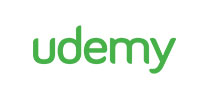جمع جزء: 378,000 تومان
- × 1 عدد: Advanced Algorithmic Thinking with Python - 189,000 تومان
- × 1 عدد: Python Programming: PEP 8, Code Style, and Advance - 189,000 تومان
Domain Controllers (DC), Global Catalog, FSMO, Groups, Users, Security, Domains and Forests ,Trusts, GPO, much more..
در این روش نیاز به افزودن محصول به سبد خرید و تکمیل اطلاعات نیست و شما پس از وارد کردن ایمیل خود و طی کردن مراحل پرداخت لینک های دریافت محصولات را در ایمیل خود دریافت خواهید کرد.


Powershell and Windows Server: 26+ Hours Bootcamp with Labs

Enterprise Storage Solutions with Linux and Windows Server

Automating Windows Deployment Images Using MDT and WDS

Master Linux and Command Line: Ultimate Admin Bootcamp 2025

Introducing Linux Command Line and Practical Shell Scripting

PyCharm for Beginners: A Comprehensive Guide

Kubernetes Fundamentals: Getting Started

Azure Entra ID: Identity Management and Architecture

Cryptography Unveiled: Your Path to Digital Security

DevOps Tools for Beginners: Starting with Python Scripts
✨ تا ۷۰% تخفیف با شارژ کیف پول 🎁
مشاهده پلن ها